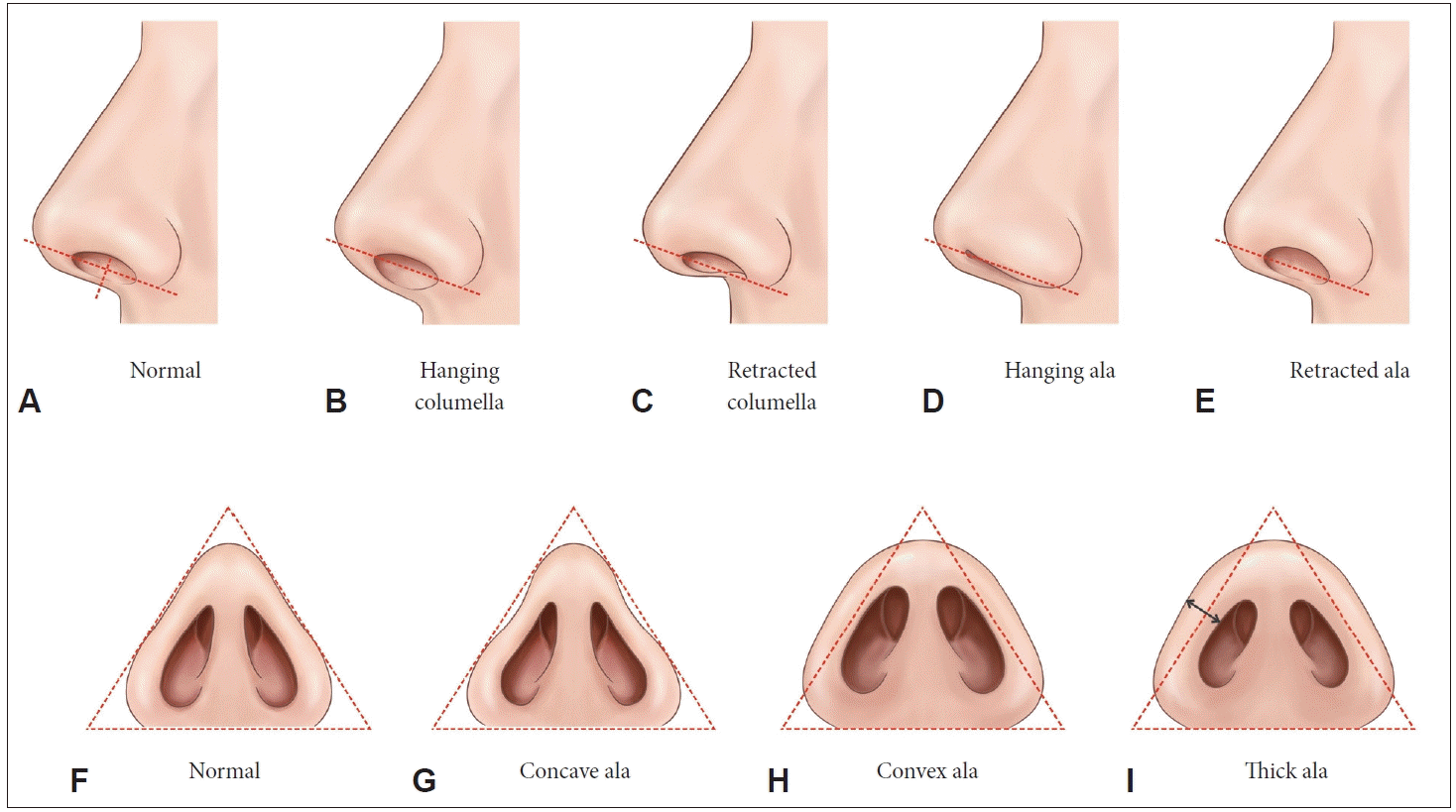1. Unger JG, Roostaeian J, Small KH, Pezeshk RA, Lee MR, Harris R, et al. Alar contour grafts in rhinoplasty: a safe and reproducible way to refine alar contour aesthetics. Plast Reconstr Surg. 2016; 137(1):52–61.
2. Totonchi A, Guyuron B. Alar rim deformities. Clin Plast Surg. 2016; 43(1):127–34.
3. Gunter JP, Rohrich RJ, Friedman RM. Classification and correction of alar-columellar discrepancies in rhinoplasty. Plast Reconstr Surg. 1996; 97(3):503–9.
4. Choi JY. Alar base reduction and alar-columellar relationship. Facial Plast Surg Clin North Am. 2018; 26(3):367–75.
5. Guyuron B. Alar rim deformities. Plast Reconstr Surg. 2001; 107(3):856–63.
6. Kim JH, Park SW, Oh WS, Lee JH. New classification for correction of alar retraction using the alar spreader graft. Aesthetic Plast Surg. 2012; 36(4):832–41.
7. Herruer JM, Prins JB, van Heerbeek N, Verhage-Damen GWJA, Ingels KJAO. Negative predictors for satisfaction in patients seeking facial cosmetic surgery: a systematic review. Plast Reconstr Surg. 2015; 135(6):1596–605.
8. Hah YM, Jung SY, Kang JW, Huh JH, Min JY, Kim SW, et al. Psychological characteristics and aesthetic concerns of male patients seeking primary rhinoplasty. Korean J Otorhinolaryngol-Head Neck Surg. 2018; 61(5):252–7.
9. Jung DH, Kwak ES, Kim HS. Correction of severe alar retraction with use of a cutaneous alar rotation flap. Plast Reconstr Surg. 2009; 123(3):1088–95.
10. Jin HR, Won TB. Rhinoplasty in the Asian patient. Clin Plast Surg. 2016; 43(1):265–79.
11. Farkas LG, Hreczko TA, Deutsch CK. Objective assessment of standard nostril types--a morphometric study. Ann Plast Surg. 1983; 11(5):381–9.
12. Hwang TS, Kang HS. Morphometry of nasal bases and nostrils in Koreans. Ann Anat. 2003; 185(2):189–93.
13. Tanna N, Nguyen KT, Ghavami A, Calvert JW, Guyuron B, Rohrich RJ, et al. Evidence-based medicine: current practices in rhinoplasty. Plast Reconstr Surg. 2018; 141(1):137e–51e.
14. Yu MS, Jang YJ. Preoperative computer simulation for Asian rhinoplasty patients: analysis of accuracy and patient preference. Aesthet Surg J. 2014; 34(8):1162–71.
15. Yang F, Liu Y, Xiao H, Li Y, Cun H, Zhao Y. Evaluation of preoperative and postoperative patient satisfaction and quality of life in patients undergoing rhinoplasty: a systematic review and meta-analysis. Plast Reconstr Surg. 2018; 141(3):603–11.
16. Wilson JB, Arpey CJ. Body dysmorphic disorder: suggestions for detection and treatment in a surgical dermatology practice. Dermatol Surg. 2004; 30(11):1391–9.

